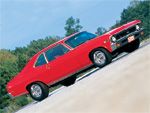
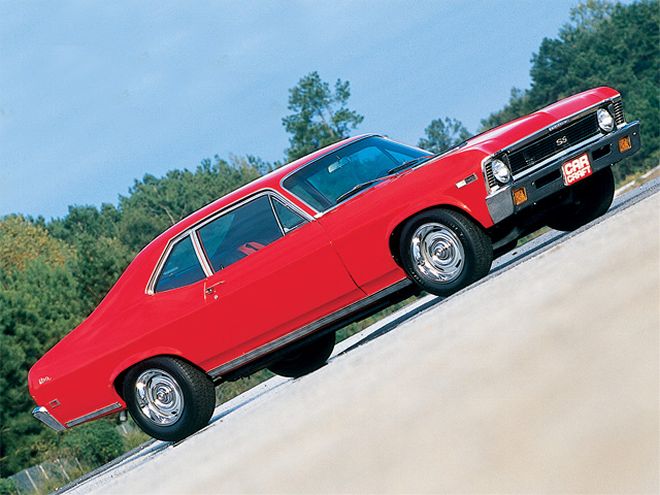
Forget the stinkbug rakes and that offensive off-road-style wheel gap--street machines were meant to hug the ground, but there's a right way and a wrong way to get there. This story will deal with modifying the existing suspension. We'll leave the air-suspension tricks for another issue.
Ideally, it's best to replace the factory spring with readily available drop springs from manufacturers like Detroit Eaton Springs, Eibach, Global West Suspension, Hotchkis Performance, and others. These companies have invested a tremendous amount of time and money in research and development and can easily suggest components that will suit your specific needs.
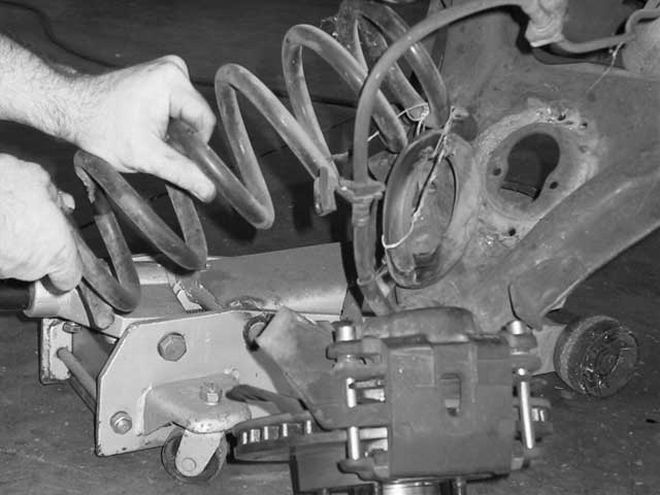 If you have minimal experience installing front springs on any A-arm assembly, be extremely careful. Compressed springs have a tremendous amount of stored energy that can make them dangerous to remove. It's not uncommon for springs to literally fly out of the chassis if not properly contained. It's best to place a floor jack on the bottom of the A-arm to compress the spring, remove the ball joint, and slowly drop the A-arm. If you're not comfortable attempting this, most professionals will usually replace the springs for as little as $50.
If you have minimal experience installing front springs on any A-arm assembly, be extremely careful. Compressed springs have a tremendous amount of stored energy that can make them dangerous to remove. It's not uncommon for springs to literally fly out of the chassis if not properly contained. It's best to place a floor jack on the bottom of the A-arm to compress the spring, remove the ball joint, and slowly drop the A-arm. If you're not comfortable attempting this, most professionals will usually replace the springs for as little as $50.
An alternative is to cut the original springs, but bear in mind that while this lowers the ride height, it also increases the spring rate, which increases ride stiffness. This isn't necessarily bad, since increasing spring rate also tends to improve handling. If you opt to go this route, make sure to use a chop saw with an abrasive cut-off wheel that can cut through the coil relatively quickly. Coils are nothing more than wound steel wire, so the added time of cutting one with a torch can subject it to enough heat to weaken the steel and cause the spring to sag. Finally, only cut the coil in quarter-coil increments and trial fit them. This method can become time consuming, but it's the only way to monitor the exact ride height you'll end up with. Cut too much and you'll be buying new springs.
In the end, you'll find that a properly lowered vehicle not only looks better, but will also lower the center of gravity for improved handling characteristics, provide a much better road feel, and reduce excessive body roll. Conversely, an improperly lowered vehicle will be little fun as a daily driver, and more importantly, it may be dangerously unpredictable on rough pavement. So if you've ever contemplated dropping your street machine, read on as we offer up this guide to achieving a functional in-the-weeds stance.
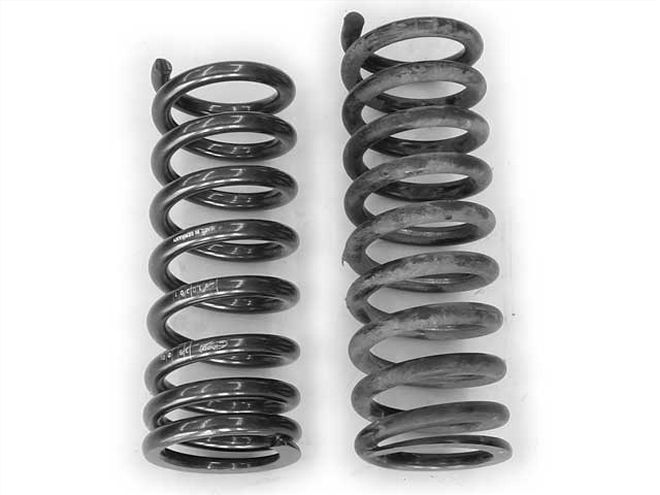
Spring Selection
In order to have a well-handling car, the entire suspension needs to be properly thought out. This means that dropping the car with heavy-rate springs is not always the answer when it comes to a balanced package of stance, comfort, and corner carving. Having too much spring rate can cause the tires to bounce and lose contact with the road, while a too-soft spring rate can cause the entire suspension to continuously bounce off the bumpstops. So unless you've done this before, it's best to leave the spring selection to the aftermarket manufacturers who can explain in detail how a certain spring rate will react in your vehicle.
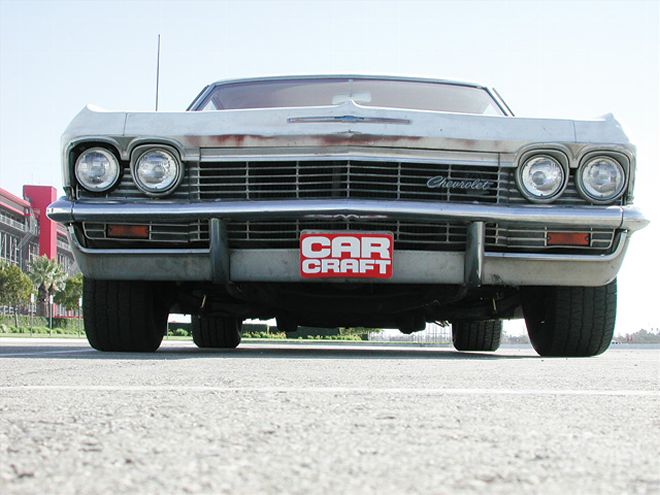 Be sure to check your alignment any time you alter the ride height. While lowering your street machine will vastly improve the center of gravity for better handling, it can also increase negative camber--the inward tilt of the top of the tire (as shown above). This causes excessive wear on both the tire and suspension components.
Be sure to check your alignment any time you alter the ride height. While lowering your street machine will vastly improve the center of gravity for better handling, it can also increase negative camber--the inward tilt of the top of the tire (as shown above). This causes excessive wear on both the tire and suspension components.
Rate vs. Load vs. Sag
It's all too easy to get lost in suspension lingo. However, when it comes to springs, there are a few terms that you should get familiar with and understand.
- Spring rates are generally rated in pounds per inch (lb/in), which represents the amount of force required to compress the coil spring by 1 inch. For example, a 900 lb/in spring will compress 1 inch under a load of 900 pounds. This is not the same thing as pounds per square inch (psi), which is a measure of pressure.
- Spring load is the amount of weight that a coil spring can support at any given compressed height. More simply put, if a 10-inch-tall spring at free height with a 200 lb/in rate were compressed to a height of 6 inches, it would be supporting 800 pounds at that height.
- Spring sag happens over time and will eventually drop a car's ride height even lower. While this won't affect its spring rate, it can cause other problems, such as ground clearance, causing the tires to rub or the chassis to compress onto the bumpstops.